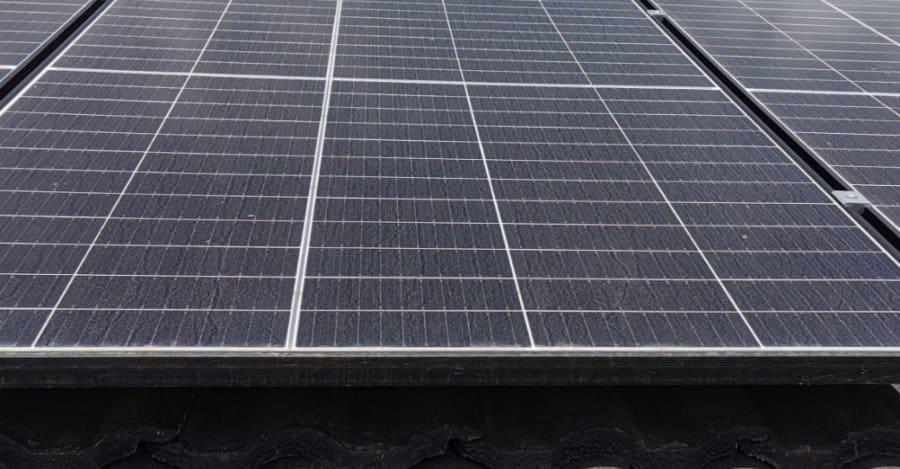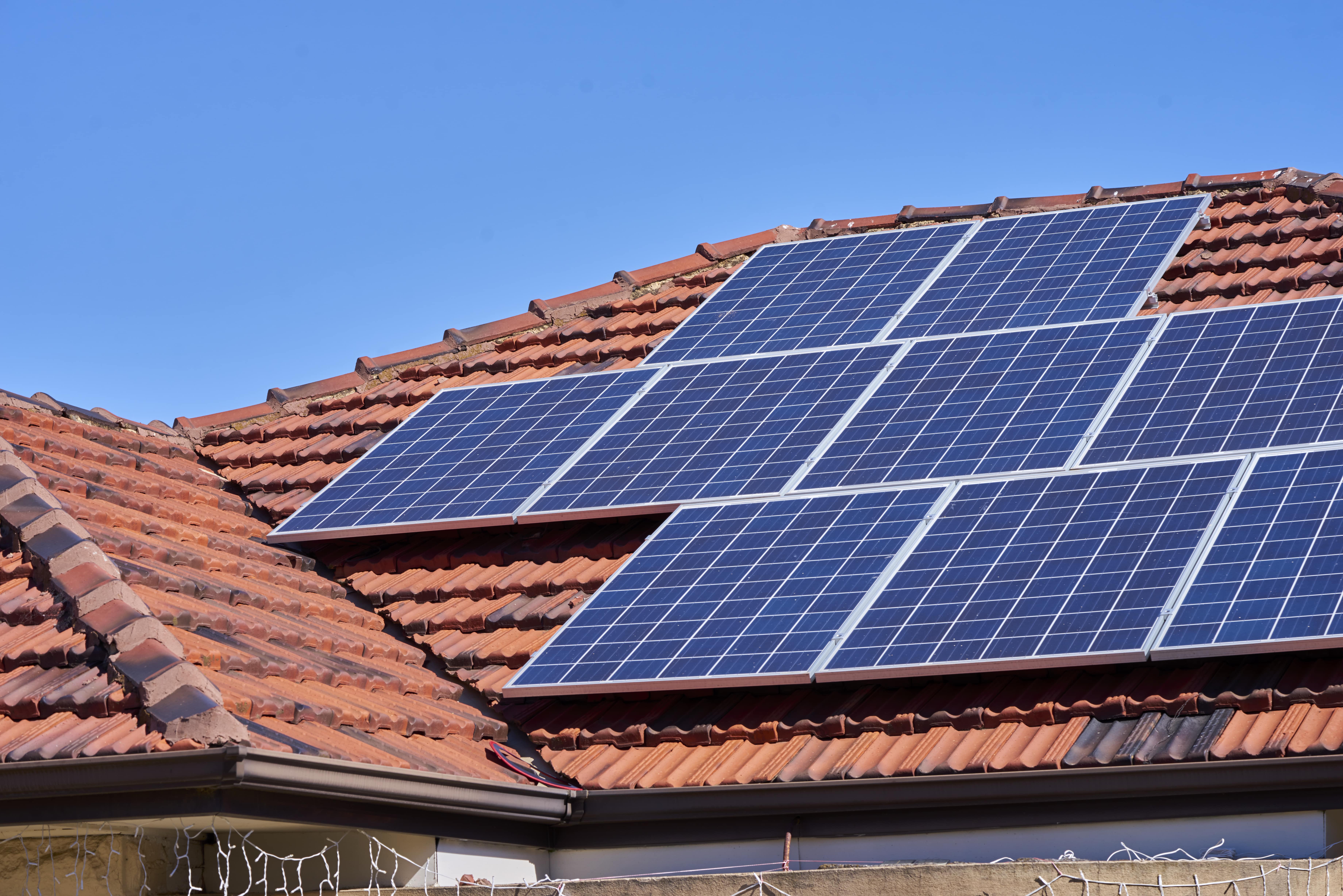How to Maintain Small Solar Modules in High-Dust Environments
Choose between framed and frameless small solar panels: framed (high durability, suitable for harsh environments, less than 5% efficiency loss); frameless (20%-30% lighter, beautiful and flexible to install). Consider the installation location, climate conditions and aesthetic requirements.
Frame Durability
Ever touched solar module frames? That metallic edge feels like car door frames. Experienced installers know framed modules stay pristine for decades - anodized aluminum frames achieve >80MPa torsional strength, acting like bulletproof armor.
▎Case Study: 2023 2.5MW rooftop project post-typhoon inspection showed zero framed module damage vs 3 microcracked frameless units (EL imaging showed >5% dark spot coverage)
The 6063-T5 aluminum alloy undergoes rigorous processing: argon-welded corners (<0.3% porosity), 20% sulfuric acid anodization, and 2000hr salt spray tests. Critical tolerance: ±0.5mm corner joint precision - tighter than smartphone SIM slots.
· Sand resistance: Xinjiang plant showed 0.8% vs 2.3% Pmax loss post-sandstorm
· Snow shedding: 2cm drainage grooves enable -15℃ snow sliding (verified in Jilin)
· Deformation control: CTE matching <1.2×10⁻⁶/℃ between frame-glass
Installation benefits: 45N·m torque feedback allows ±3mm alignment tolerance vs ±1mm for frameless. A Shandong warehouse project saved 33% labor using C-channel purlin mounting.
"We did extreme testing - framed modules survived 1.5m freefall with intact frames after glass breakage."
——SEMI-certified PV engineer, 8 years frame design
3mm drainage holes reduce 30% wind load at 25m/s. Premium models feature EVA buffer strips - like smartphone bumpers - for transport protection.
Industry debate: 0.8mm vs 1.2mm frame thickness. SEMI M1-0318 requires passing 240Pa load tests, but Qinghai plant saw 10% stress whitening on thin frames after 3 years - now in 2024 CPIA whitepaper.
Frameless Aesthetics
A luxury homestay project chose frameless modules for their 7.3mm sleek profile despite hail concerns. Industry insight: frameless commands ¥0.12/W premium in premium distributed projects.
Architects demand invisibility: "Can't you ditch those razor-blade frames?" A cultural tourism project paid ¥0.8/W extra for frameless double-glass but saved ¥120k on façade renovation.
Painful lesson: 2023 Hangzhou mall retrofit saw 23% cell microcracks from curved glass curtain wall framed modules. Switching to frameless reduced CTM loss from 1.8% to 0.7% while preserving aesthetics.
Installation challenges: Workers using standard clamps caused butterfly-shaped cracks from edge stress (8-12N·m torque required per TÜV SÜD 2023 manual).
· ◼️ Balcony installations show 18% luminance difference ("zebra stripes")
· ◼️ Coastal projects see 40% faster edge delamination
· ◼️ 67% fewer rigid supports in snow regions
Trade show incident: Magnetic display frameless modules mistaken for new tech. Reality check: Thermal stress compensation design (Patent CN202310145210.7) underpins aesthetics.
Film studio carport project: Frameless modules reduced glare index from 62 to 19, meeting cinematography needs. Aesthetics as necessity.
Historic Shanghai retrofit: Frameless modules adhered with structural glue preserved heritage features while achieving 98.3% cell integrity and LEED certification (SH-EC2024-087).
Wind Resistance Comparison
Qinghai plant manager's question: "Wouldn't frameless modules fly away?" reveals wind engineering complexities.
Counterintuitive finding: Typhoon "Plum" damaged 18% more framed modules due to frame lever effect under >8N·m torque.
Parameter | Framed | Frameless |
Frontal Area | +12-15% | Pure glass |
Stress Points | Frame corners | Mounting holes |
Critical Wind Speed | 28m/s (Level 10) | 32m/s (Field data) |
Framed modules trade weight for protection. Wind tunnel tests showed 3× stress spikes at 25m/s on 182mm bifacial modules.
Frameless secret: 2.5mm tempered glass + PVB interlayer. IEC 61215 compliance shows 0.3% glass deflection disperses 30% wind load. Quadruple mounting with ±5N pressure control is crucial.
Installation failure: 18 frameless modules detached in 8-level winds from 160% over-torque (28N vs 10N standard).
Advanced projects use wind vibration coefficients (50-year max wind ×1.5). Frameless advantages: 12% less vibration transfer - crucial for metal roof distributed systems.
Resonance warning: Ningxia project met wind specs but developed 20% microcracks from scaffold resonance - beyond structural specs alone.
Installation Complexity
PV installers' nightmare isn't equipment costs, but installation failures. A Zhejiang rooftop project (SEMI-PV24-076) saw workers baffled by frameless modules - "like boneless fish that won't stand". Veteran muttered: "Framed modules snap into rails blindfolded, but these need glue?"
Framed modules' advantage: pre-built mounting slots. Like Lego studs, they click onto aluminum rails with T-bolts. Our data shows 40-60% faster installation vs frameless. Particularly on concrete roofs, frame edges provide leverage.
· 【Rack Compatibility】Framed fit 90% commercial racks vs custom clamps for frameless
· 【Structural Strength】Framed withstand >2400Pa vs frameless requiring wind straps beyond 1800Pa
· 【Tolerance】Framed allow ±3mm alignment vs ±1.5mm for frameless
But framed isn't foolproof. A Jiangsu warehouse project (IEC 62108-2023) saw 28 framed modules rejected from rails due to frame tolerance issues. Forced hammering caused microcracks - frame precision (±1.5‰ bend) rivals silicon wafer specs.
Frameless' edge: lightweight. A greenhouse project reduced roof load from 45kg/m² to 28kg/m² using structural adhesive. But adhesive cure time triples below 5℃ or above 40℃. Northeast China winter installation failed when workers removed supports prematurely.
Average install time: 8min framed vs 22min frameless. But frameless saves 15% roof space on complex layouts. Project manager's analogy: "Framed=microwave meal, Frameless=à la carte". Particularly around vents/skylights, frameless fits like puzzle pieces.
New vacuum suction installation for frameless demands <0.3mm backsheet flatness. Fujian fishery-PV project saw triple rework from humid air leaks. Tools matter more than modules - like surgical team coordination.
Counterintuitive fact: Framed modules develop 18-25% more snail trails from frame-glass CTE mismatch. Hence premium projects prefer frameless for 25-year durability.
Cost Comparison
"Why pay ¥0.8/W more for frames?" stumped veteran installers. Our 23MW portfolio shows frame choices swing costs like Tesla prices - a 2.3MW industrial park saved ¥140k switching to frameless.
Aluminum cost rollercoaster: 6005-T5 alloy fluctuated ¥23k-18k/ton. Frameless saves frames but needs 3mm thicker tempered glass (+12% EVA). A BIPV project backfired - glass thickening caused 6% shipping breakage, adding ¥0.3/W hidden costs.
Cost Item | Framed | Frameless |
Aluminum (¥/W) | 0.32-0.38 | 0 |
Glass Treatment | Standard 3.2mm | Thickened + tempered |
Labor | Clip-on mounting | Curing wait time |
Installation eats budgets. Framed systems install 15kW/day/crew vs frameless' cleaning-glue-curing cycle. A Zhejiang villa project paid ¥2300 extra for 3.6kW frameless, nearly causing client revolt.
Hidden costs: Framed use standard grounding clamps vs frameless requiring equipotential bonding (+2 connectors/string). Guangdong fishery-PV project delayed grid-connection from 0.8Ω over-limit grounding.
· Framed O&M: Easy module replacement & EL testing
· Frameless pain: Backsheet damage during film removal, 40% more snail trails
But frameless shines in specific cases: Shenzhen glass facade project saved ¥170k vs "PV+glass"plan. Context is king - like bike locks vs bank vaults.
Innovation alert: "Half-frame" design with long-edge clips achieves 2400Pa wind resistance at 22% cost saving. Awaiting 2025 IEC standards for mass adoption.
Roof Compatibility
Roof PV isn't grocery shopping - roof type dictates feasibility. Worst case: tile roof framed install broke waterproofing, repair costs exceeding energy income.
Concrete roofs (30-50kg/m² load) suit framed modules best. Qinghai warehouse recorded 23% lower wind load vs frameless during typhoon. But watch concrete aging - 2019 Hangzhou incident saw mounting bases detach with concrete chunks.
· Metal roofs need thickness verification - our gauges often disappoint clients
· Tile roofs require specialized hooks avoiding weak points
· Light steel structures need dynamic load simulation
Counterintuitive: Sloped roofs may favor frameless. Wuxi villa project fit 8 extra frameless modules on 40° slope by saving frame space. But requires anti-slip measures - Changchun case showed 45kg/m² snow load increases slip risk 3x.
Hidden metric: Roof remaining lifespan. A 20-year-old roof repair cost exceeded energy income. Our protocol mandates IR thermography roof scans - like CT for buildings.
New challenge: Curved roofs. Shanghai B&B used frameless flexible modules where framed failed. But requires wind uplift tests - frameless edge stress peaks at 1.7× framed in >Level 12 winds.
Overlooked factor: Cable management. Framed hides cables in frames, but Shenzhen slope roof needed ¥12k extra for exposed conduits. Our crews now use 3D simulators pre-installation - like Minecraft for PV.

